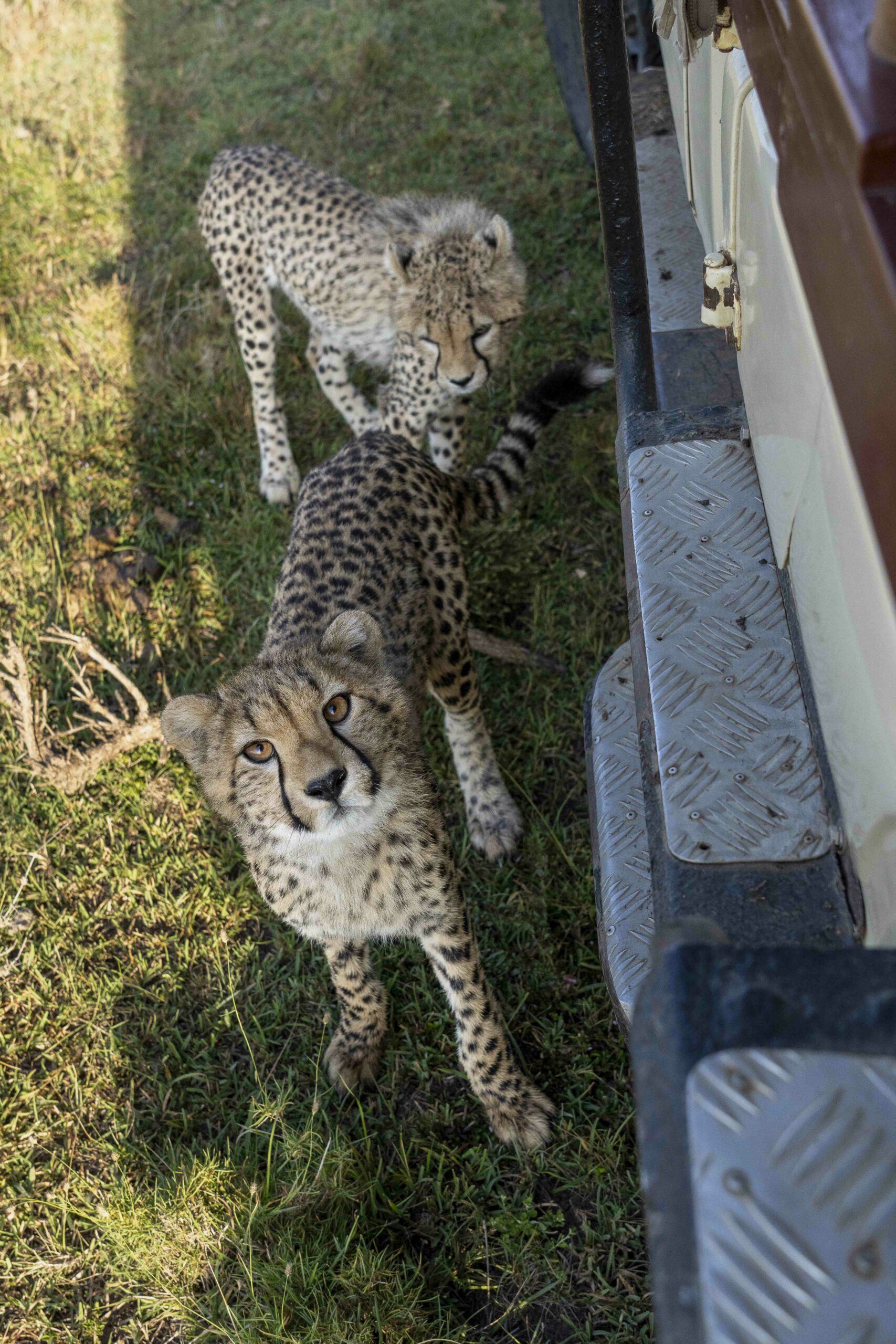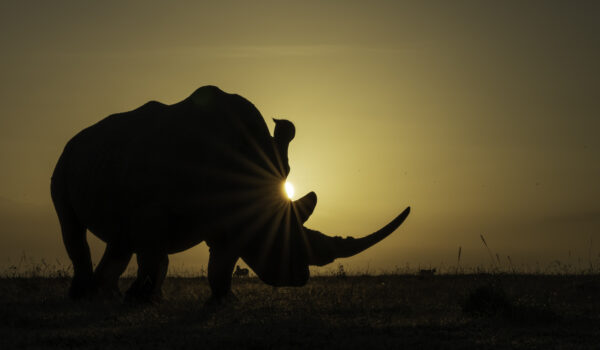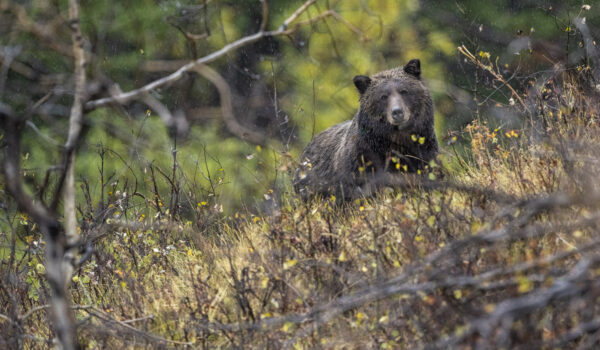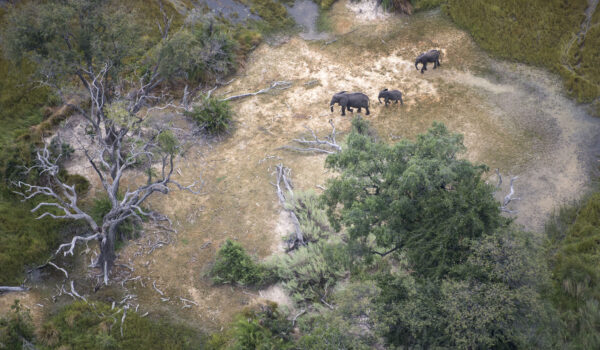Originally published in Outdoor Photographer in May 2023
When my usual adventures to far-off places were curtailed due to the pandemic, I was determined to photograph something (anything, really), so I spent an extended period photographing a single stretch of beach in Northern California. That process of shooting one single subject—although challenging and often frustrating—pushed me creatively in ways I’d never experienced before.
The result was not only a series of photographs that I loved but also a deeper examination of the single-subject concept, as I discussed in Outdoor Photographer in May 2021. In the summer of 2022, as I was packing my bags and heading for the wide-open savannahs of Kenya’s Maasai Mara National Reserve, I wondered if I could use that same idea to photograph wildlife.
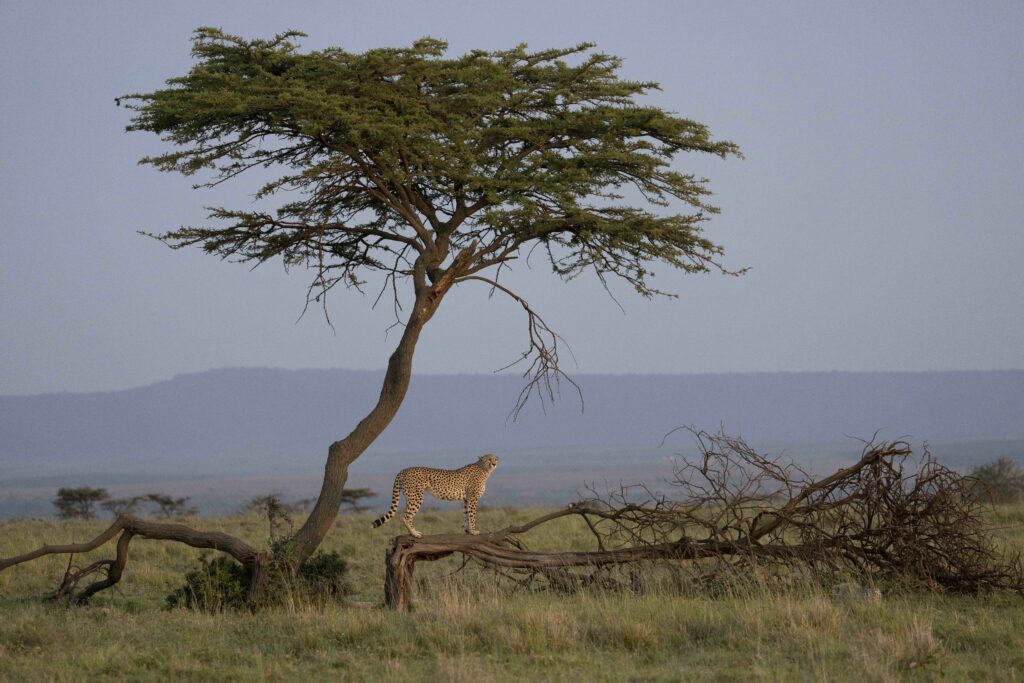
My portfolio reflects the extensive hours I’ve spent photographing animals, and reviewing those images told me that I tend to get the safe shots: zoom all the way in, fill the frame, wait for the moment and press the shutter. If I’m honest with myself, I think I lean on those shots because I’ve spent so much money and time to get to those places to make photographs of those animals that I want to make sure I come home with something. But that’s not necessarily the best plan.
In looking at my past work, I realized that I wasn’t taking many risks—and without risk, creativity suffers.
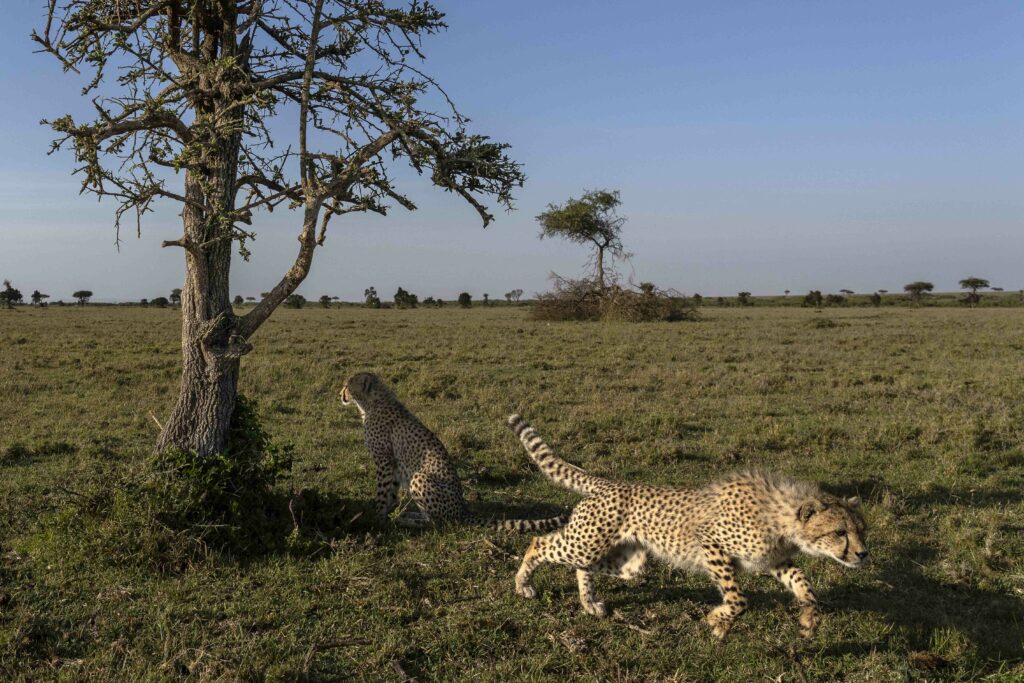
So, on my return trip to Kenya, I gave myself a challenge: I’d only photograph a single family of cheetahs. This constraint meant I needed a variety of shots showing different aspects of their lives. It became clear to me that I wanted to move beyond getting a few cute headshots that would be good enough for social media. I wanted to tell a bigger story.
Planning is Everything
Although the single-subject idea helped make the actual photography more focused, I found it took more intense planning than my previous trips. Flexibility was crucial to capture a diverse portfolio of a single family, so I packed everything from my wide-angle lens to a super telephoto. I also spent time studying other photographers’ cheetah photographs—not to copy them but to be inspired by the range of possibilities.
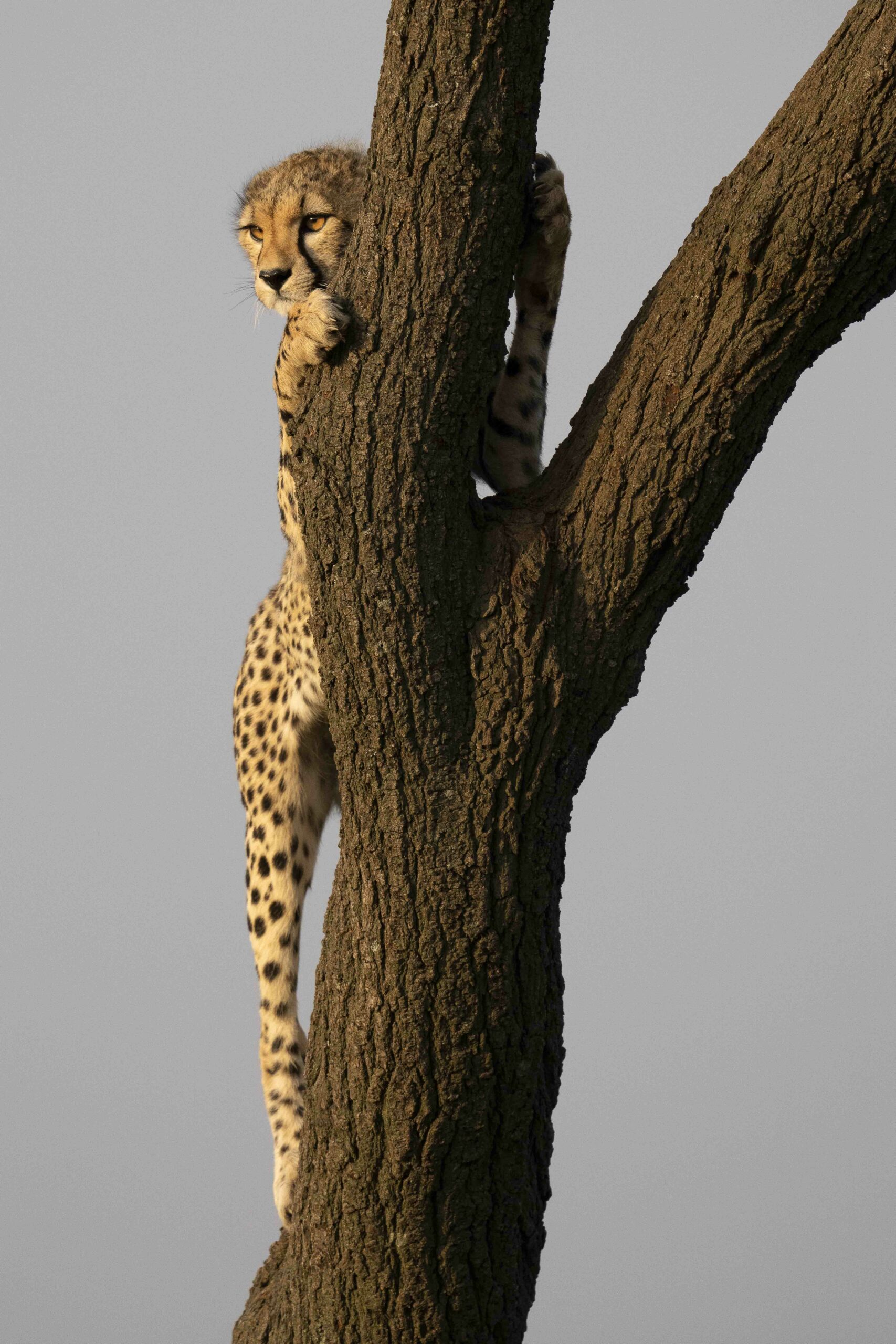
As adults, cheetahs climb trees to both look for prey and to avoid predators. This 8-month-old cub seemed to climb for the sheer joy of it, never missing an opportunity to be up in the air.
Since animals do their own thing, you can’t truly plan what shots you want to make. Instead, you need to come up with a philosophy to guide you. Renowned wildlife photographer and friend Paul Nicklen talks about his 20/60/20 rule: spend the first 20% of your time getting the easy photographs out of the way; then spend the next 60% pushing yourself to make photographs that really stretch both your technique and your vision; and finally, spend the last 20% trying for crazy “once-in-a-lifetime” shots.
Trusting the Process
Fifty hours after leaving my home in California, my guide, James, and I were out looking for cheetahs in Kenya. I’ve learned that there’s nothing more valuable than working with a local guide no matter where I travel. James has lived in the Maasai Mara area all of his life and knows the land and the habits of the animals. Not only was he able to find the cheetahs, but I could also tell him which images I was hoping for so that I’d have the best chance of making them.
On our first game drive, I found the subject for my project: a resident cheetah family of a mother and three cubs. I shot like crazy, thrilled at my luck in finding the cats on my first day. When we returned to camp, I couldn’t wait to download and review my images.

Performing this step after every outing is a crucial part of my process; it helps me look for any technical issues and critically view the images as a body of work to ensure the photographs I’m making are telling the story I want to tell.
And yet, it was that step of the process that brought my excitement crashing down. My initial image review was wildly unimpressive. Every frame was just another animal portrait, the same thing I always shot: clean, nice light and good expression.
It turns out I’d covered Paul Nicklen’s “first 20%” on my first evening. So, I ticked “cheetah yearbook photos” off my list and vowed not to shoot any more of those on this trip. Instead, I’d push both my technique and my vision far out of my comfort zone.
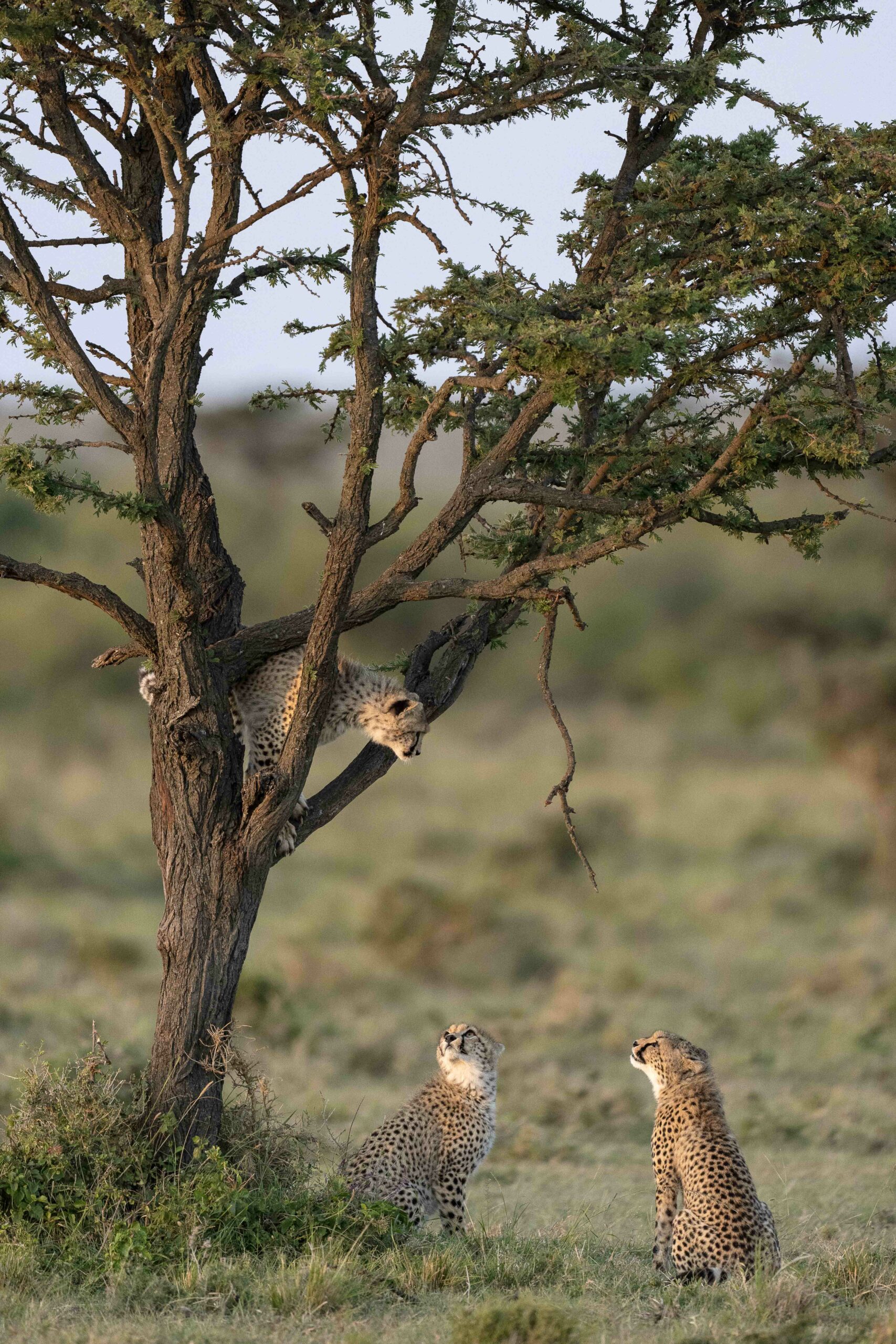
All three cubs had distinct personalities. One loved to chase. One loved to fight. One loved to climb trees and seemed to belittle its siblings’ lack of climbing skills constantly.
Making Rules
It would have been easiest to swear off using my long lens, but since it’s impossible to know how close you’ll be able to get to an animal, I knew that wasn’t the right approach. So instead, I came up with five shooting rules to help guide the process:
• The cheetahs should be a smaller part of the photograph.
• The animals need to be actively doing something and not just sitting there.
• Vary the focal lengths in scenes for more story options.
• Try to tell the story of the cheetah in its environment to show where and how it lives.
• Most importantly—don’t give up.
The last rule is critical (and the one I had to consciously remind myself of most often) because I’d come back on many days without much that inspired me. While the images were different from my typical portraits, I just wasn’t thrilled with the results.
But instead of chucking them into the trash, I started thinking of them as “sketch images”—ideas of what I wanted to capture that I hadn’t successfully executed. Having that visual gave me something to work toward on the next game drive. Sketch images became one of the best learning tools to help me build this body of work.

Narrowing Focus
Focusing on a single subject allows unexpected things to happen. For example, the cheetah cubs decided our vehicle would be the perfect prop for their game of chase one morning. It started as running past the vehicle but quickly escalated to running under it, doing laps and at one point, stopping to stare at the odd mammal with a camera to his eye who came to watch them every day. Most of the time, the animals were far enough away that I needed at least a 200mm lens to frame a scene, but in this instance, looking into the eyes of a cheetah through a 24mm lens is something I’ll never forget!
As my image reviews progressed, I refined my rules. Once I was comfortable that I had a subject covered, I became more focused and could concentrate solely on a specific behavior, such as the mother grooming a cub or cheetahs playing. This eliminated my desire to chase every single bit of action so I could concentrate on refining my images.
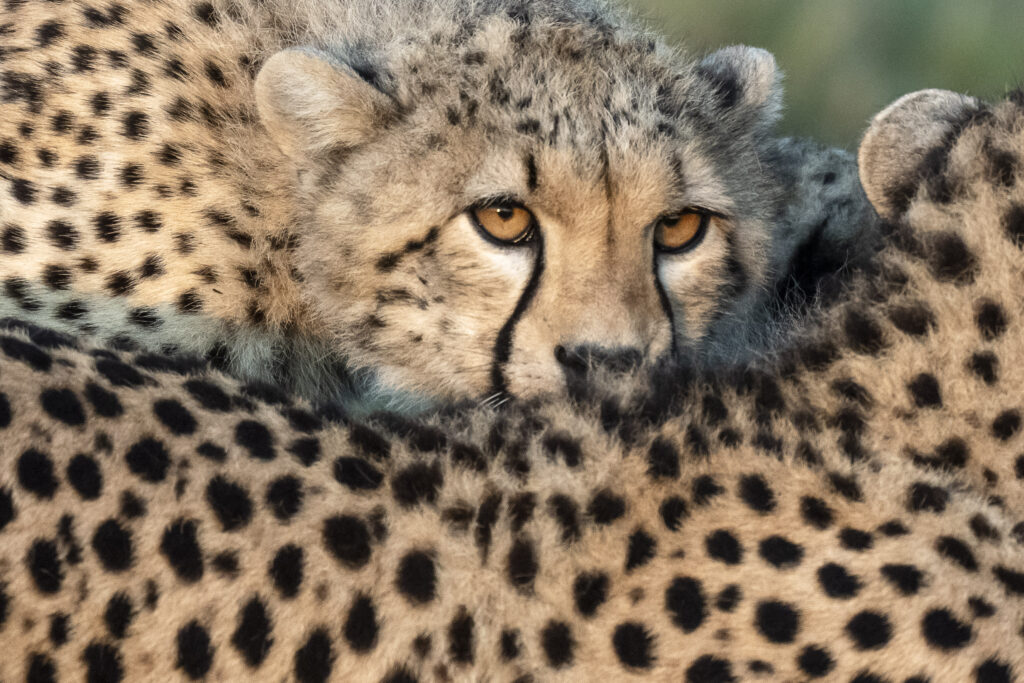
Tell a Bigger Story
With any photography trip, there’s always a fear you’re missing out on something because there’s no way you can shoot everything. And as I sat on the plane headed for home, I couldn’t help but reflect on the adventure and ask myself if the experiment was worth it.
Unquestionably, it was. Not only do I know a lot more about cheetahs than I did when I arrived, but also my images are much more expressive. I’ve also learned to think about “bodies of work” instead of individual images to tell a bigger story.
A body of work is rooted in a definable idea and tells a story; it has a beginning, middle and end, and every element in the series builds on the theme. Discovering the power of bodies of work means I no longer want to concentrate on making that “perfect Instagram shot.” I’m much more interested in using multiple images over time to tell a story with greater nuance and depth. I now use this approach in my wildlife photography and in my underwater and landscape photography as well—this process works for all genres.
To think in terms of bodies of work, you don’t need to travel to Africa or any other far-off locale; the ideas I’ve shared in this article also work for local projects. Building long-term relationships with parks or animal shelters is a great way to get access to subjects to learn about them and potentially use your photography to help those organizations tell stories and raise awareness.
So, whether you’re shooting around the world or around the corner, be prepared, plan and think about creating a body of work that’s broader and, perhaps, more meaningful than a single frame.
